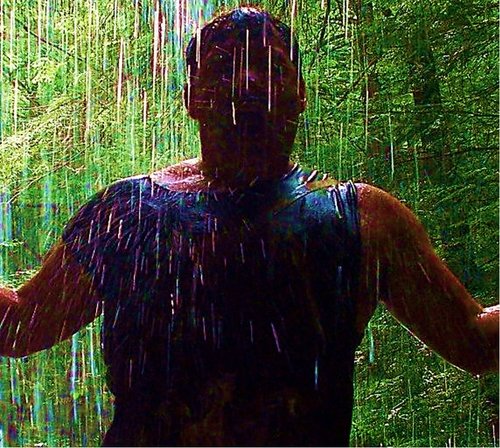MOVIE REVIEWS
 Review by Wuchak
Review by Wuchak
_**Apocalypse Now in the Amazon headwaters**_ Called Fitzcarraldo by the Indians, an Irishman (Klaus Kinski) living in Iquitos, Peru, dreams of bringing Grand Opera to the jungle city in the Amazon Basin. It’s the early 1900s and there’s a rubber boom. To fund his dream he decides to exploit a considerable area of rubber trees growing beyond the impassable Ucayali Falls. To get to this remote area he incredibly has his steamboat lifted over a hill from another branch of the Amazon with the assistance of notorious headhunters. Claudia Cardinale plays his girlfriend, a successful brothel owner. Werner Herzog’s “Fitzcarraldo” (1982) is superior to his “Aguirre, the Wrath of God” (1972), which was shot in the same general area, the Amazon basin east of the Andes Mountains. It’s longer by just over an hour, but it has a more compelling story. “Aguirre” influenced Coppola’s “Apocalypse Now” (1979) but “Apocalypse Now” likely influenced “Fitzcarraldo.” The difference is that “Apocalypse Now” took advantage of its infamous setting, the Vietnam War, whereas few people know of the rubber boom of the early 20th century in the Iquitos area. There’s also less thrills in “Fitzcarraldo.” It’s more impenetrable and all-around curious, a cinematic oddity. Yet it has its highlights, including the core cast, e.g. the burly captain, the impressively hulking indigenous engineer and the drunkard cook. What’s it all about? The beauty of art, great dreams, indomitable will, mysterious cultures, devastating failure and… winning anyway. The film runs 2 hours, 37 minutes, and was shot in the Iquitos area, Peru, and Amazonas, Brazil, including a couple Tribal Regions. GRADE: B+/A-
 Review by CinemaSerf
Review by CinemaSerf
Klaus Kinski is great as the eponymous, slightly maniacal, opera lover who decides that his love of Verdi, Bellini and Puccini needs to be shared with his mid-jungle community. He realises that to do that, he must have cash - and that's only to be found if he can manage to tap into the rubber trees deep into the Amazon. To that end, he and local hostess "Molly" (the sparingly featured Claudia Cardinale) manage to scrape together enough cash to buy a dilapidated old steamer from local grandee "Don Aquilino" (José Lewgoy) and he sets off into uncharted waters with a skeleton collection of untrustworthies into the realm of rapids, insects and hostiles. There's a snag to his cunning plan, though. The area he wishes to exploit is all but inaccessible and he is going to have to figure out some considerable engineering legerdemain if he is to achieve his goal. Fortunately, along the way, they encounter some locals who have a legend that a yellow-haired man would come from their gods and - well anyway, he fits that bill and they agree to help him get the boat uphill - literally - from one river to another. Can they keep their superstitious new allies and their fairly fickle crew on side long enough to succeed and then make it back to what passes for civilisation? Now it does have to be said that some of the continuity here puts John Wayne's watch to shame, but given it was filmed in Peru and on the Amazon itself, this is an astonishingly accomplished piece of film making that really does immerse us in not just the struggle itself but in the character of a man who treads the paths between lucidly, ingenuity and insanity adeptly. It is a little too long, there are too many scenes that add little to the pace of the film, but Kinski and Herzog thrive in this hot and humid climate to deliver an entertaining and exciting travelogue the likes of which you'll never see anywhere else!